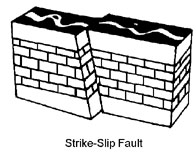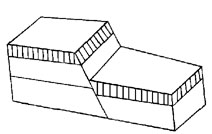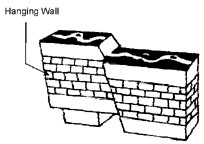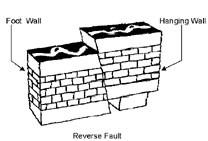
A D I V I S I O N O F E K L A V Y A E D U C A T I O N F O U N D A T I O N
| Code: TLM-Sc-004 | Age: 9-16 yrs | Name: Geology Demonstration Kit |
| To illustrate a STRIKE-SLIP FAULT a fault in which the movement has been horizontal:
1. Set up the two larger simulated rock formations as shown.
2. Move the simulated rock formation on the right in the direction indicated.
Normal Fault: In a normal fault the footwall moves down the fault plane.
*The term hanging wall and footwall are used to describe the two blocks that are involved in faulting. The hanging wall is the block above the fault plane and the footwall is the block below the fault. The terms were devised by miners when they found themselves in a tunnel running along a fault. They naturally called the block above the fault the hanging wall and the block below the footwall. |
Reverse Fault: As the name indicates it is just the reverse of normal faulting. Here the footwall moves up. 1. Set up the two larger simulated rock formations as shown below:
2.Add two blocks to right side as shown below:
Horst or Block Mountain: It is defined as a raised block between two parallel faults. If due to faulting, the faulted block moves down from either side, the central part remains raised as Horst or Block Mountain. |





